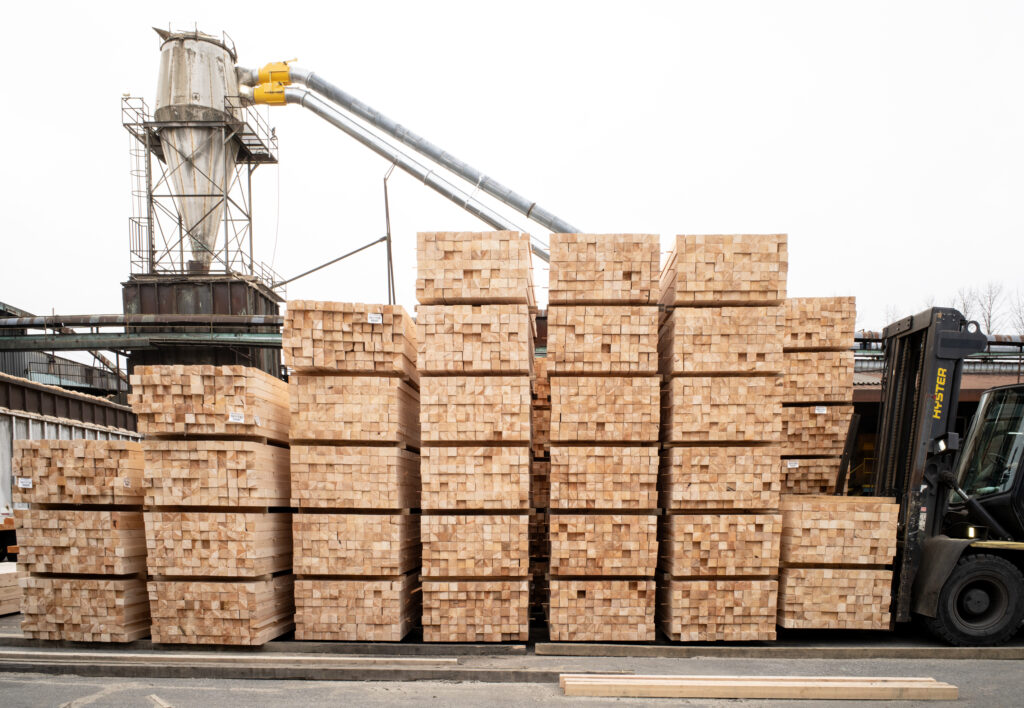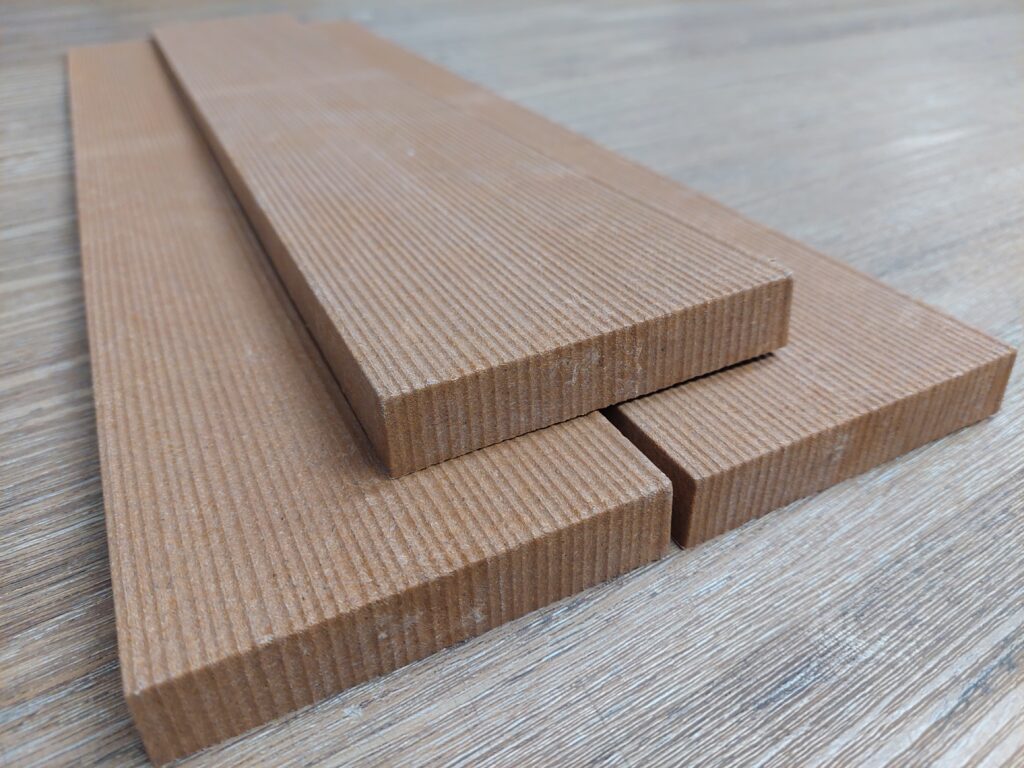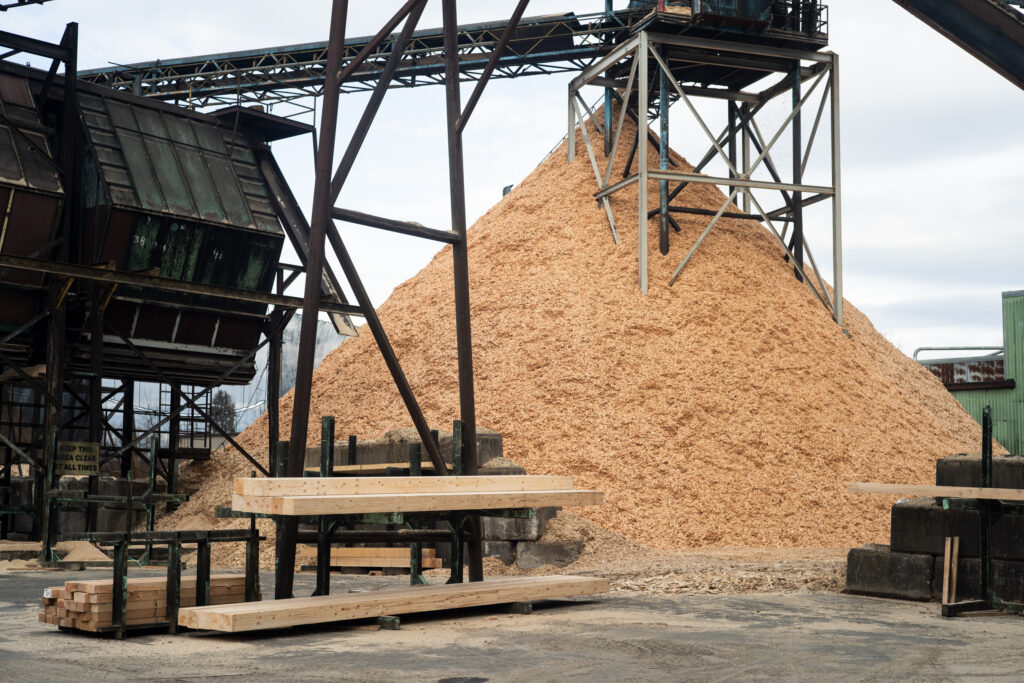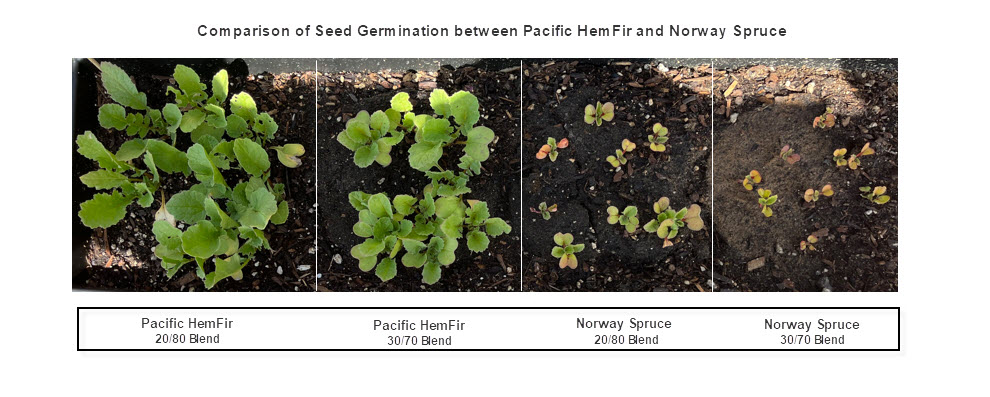
Eldest brother and business partner Tom Jones with his dad’s Model A Ford that once delivered loads of shingles to Teal-Jones customers.
This profile, featuring the Teal-Jones Group, is one of a series of articles showcasing Pacific HemFir as a high performance, low cost, sustainable building solution with untapped potential in expanding applications.
The enterprising spirit rooted in the Teal-Jones Group started more than 75 years ago in 1946 when Jack Jones returned from WWII and hung out his shingle. That shingle was made of cedar.
The one-man shingle mill grew and 23 years later, sons Tom and Dick Jones took over carrying on that flagship can-do spirit that has made Teal-Jones the largest privately held forest products company operating on the west coast of Canada.

Teal-Jones operates a large log, small log, and planer mill on its 35-acre site along the banks of the mighty Fraser.
Born with sawdust in their bones, Sales Manager Paul Saini credits the owners’ hands-on approach for driving this historic success. He says their direct management results in a constant quest for business opportunities to further expand the companies’ synergies with renewable, sustainable products that turn challenges into unmapped chances. “That interest leads them to listen carefully to all ideas that stem from the operations staff, our customers and the marketplace.”
No idea is overlooked and much like Google’s once popular moonshot projects, Teal-Jones has a few “flyers” on the horizon, separate from its core business as a primary manufacturer. According to Saini, these value-added side projects need time and investment to develop but one day it is hoped they will become moneymakers for the company and, like all its products, will contribute to a renewable, sustainable future for generations to come.

Pacific HemFir 4×4, surfaced and waiting for packaging.
Composite Shingles
Consistently seeking new ways to innovate and expand, Teal-Jones is currently building on its expertise in roofing to take shingles to another segment of the marketplace. Its shingles of the future are composites made of ground hemlock flour, recycled plastic, limestone dust, fungicides, UV resistors, and a binding agent. The flour is pressed into a wedge shape to produce a roofing product that would resemble traditional wood shingles. This same process can be expanded to siding in decking applications.

Hemlock sawdust is dried and ground to produce Teal-Jones’s composite shingle.
Pacific HemFir has several significant advantages over some of the other materials being used in new and innovative applications like composite roofing. It is non-resinous and an abundant species on the coast of British Columbia making it affordable. It is sustainable and renewable. Grown and harvested within the context of B.C.’s leading sustainable forest management regime, Pacific HemFir is a natural solution that helps mitigate climate change, locking in carbon over the wood product’s lifetime.
“Hemlock makes up about 70 per cent of our timber base and cutting time in our sawmill,” emphasizes Saini. “Due to the high percentage of our timber being hemlock, this has traditionally been the most undervalued species within the coastal fibre mix.”
Traditionally, the by-products in chip form are sold to pulp mills, the sawdust and shavings are used for bioenergy, the agriculture industry and animal bedding, returning minimal value to the sawmill. Predictably, this motivated Teal-Jones to think of and investigate alternate opportunities.

Hemlock woodchips, the source of Teal-Jones’s composite shingle.
The plastic composite market in North America is valued at $5.8 billion, according to Markets and Markets. Composite products emulate the appearance of more expensive traditional roofing products and increasing contractor familiarity with installation processes for composite roofing support growth in this market.
“Financing these flyers is always cumbersome,” adds Saini. “The ideas need to be developed and our sales team needs to find the right customers to support the venture. Manufacturing needs to buy in, and the inevitable trial and error ensues with all the stakeholders remaining committed and on board.”
As a niche product that is near and dear to its heart, Teal-Jones’s composite shingle has been years in development, sometimes demanding personal financing to keep it afloat. But determination runs in the family. “My dad bought this place for a hundred dollars down,” recalls Dick Jones. “There were five or six people sitting around the table. The banker turned to my dad and said, ‘You’re the one with the least money and the most ambition.’”
Teal-Jones’s composite shingle has had more than one hundred different iterations to get to commercialization because in testing the product would explode or break apart under pressure. “We had to keep tweaking the formula to get it right, so the finished product was stable and consistent,” explains Saini. “Now we’re ready to take it to the next level and look at getting it to market.”
Agricultural Seed Pellet
Sustainability, coupled with Teal-Jones’s desire to improve the economics of processing Pacific HemFir, has driven the company to partner with cellulose manufacturing experts Fiber X Pro to investigate another innovative use for hemlock flour: producing seed pellets for the agriculture industry. Seed pellets have been around for almost 80 years, but climate change is driving industry into renewable product innovations for a more sustainable, green future.
The two companies have been working together to develop a hemlock flour to mill for seed pelleting and seed encrustation. Hemlock flour not only performs well in this application it outperforms the traditional wood fibre used for seed pelleting—Norway Spruce. It has comparable properties to Norway Spruce, in particular considerable amounts of Gibberellic Acid, a hormone found in plants and fungi used to convert the stored starch in the seed into carbohydrate (sugar) needed for the germination process. As a result, hemlock flour produces an exceptional rate of germination and overall increased growth of the plant. In North America having a local source of fibre to manufacture hemlock flour for seed pellets will also reduce the carbon footprint of the product by shortening the distance traveled from forest to manufacturing plant to end customers.

Listening to Jones, one clearly sees Teal-Jones has been practicing the 3Rs long before it had a label. “We just hate wasting things. Everything we do here, from sawdust residue to the cables that wrap around lumber bundles has a use. We’re the only company that cuts the cables, another company joins them together and wraps them up to reuse them. With transportation, that’s three jobs we’ve created.”

Teal-Jones supervisor and employee oversee the planer infeed.
Timing for the successful launch of these inventive products in the marketplace is less predictable than know-how. “Hemlock performs very well in these applications,” smiles Saini. “As these products continue to develop, the knowledge we gather is always retained and even if the idea doesn’t move forward today, we typically retain enough of the data to allow us to move nimbly in the future when the opportunity presents itself.”

Sorter Station prior to 60 bin sorter.
Change is constant and no one knows that better than Dick Jones, but there is another thing he knows: “Forestry is not a dying industry in British Columbia. Everybody needs a roof over their head, everybody needs food. That’s not going to change.”
